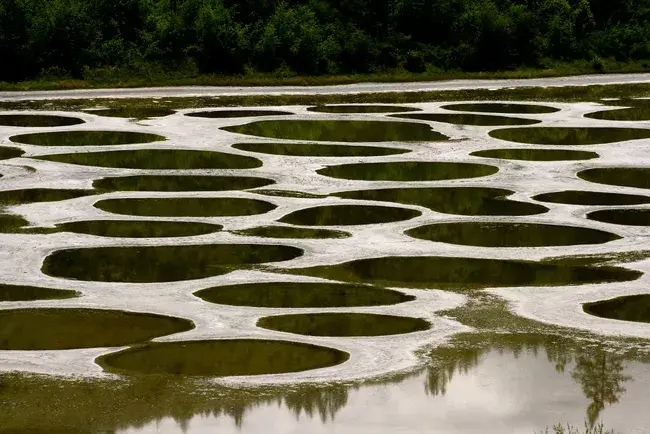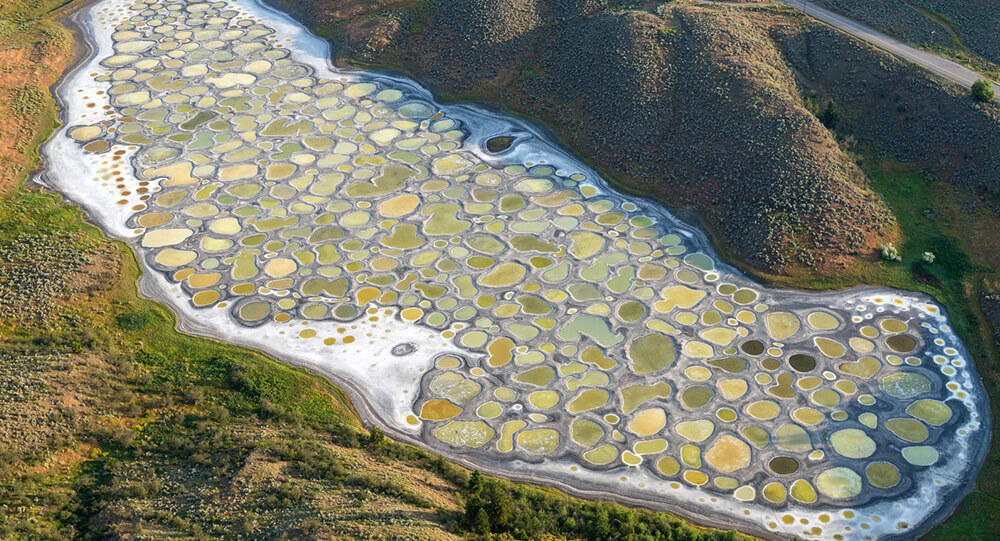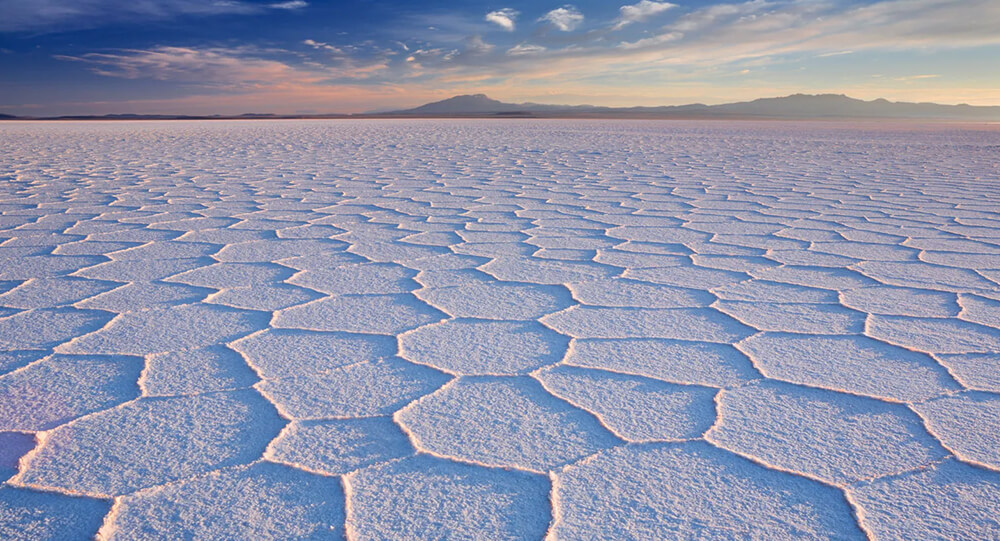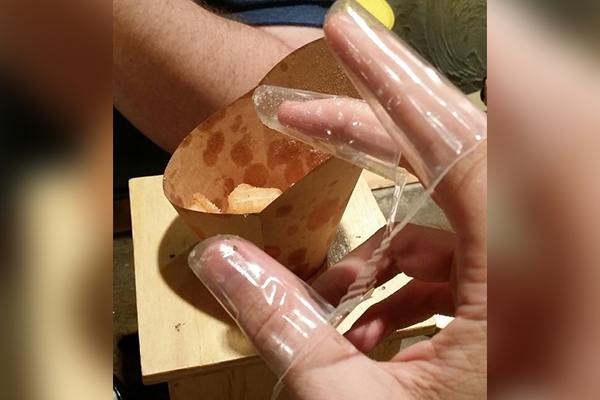During the winter and spring, the lake northwest of Osoyoos in British Columbia’s Okanagan Valley appears to be any other body of water. However, as the majority of the water evaporates in the summer, hundreds of large brackish pools are left behind, creating a polka-dotted landscape of yellow, green, and blue patches. The CBC describes Spotted Lake as “the most magical site in Canada.”
Formation of Colors and Spots

The vibrant pools are the result of a high concentration of minerals in the water, including calcium, sodium sulphates, and magnesium sulphates. Minerals and salts have been washed down from the neighboring hills. The different colors are determined by the mineral content in each pool.
A Sacred History
According to the British Columbia Visitor Centre, Spotted Lake has been considered a sacred spot by the indigenous people of the Okanagan Nation for millennia. Each of the circles was thought to have various therapeutic and medicinal characteristics. Kliluk was the name given to the lake by the First Nations of the Okanagan Valley.
For many years, the land that surrounds the water was privately owned, but in 2001, it was purchased for the benefit and use of the Okanagan Nation. The purchase ensured that the area would be preserved as a cultural and environmental site and would be protected from development.
The Magic of #SpottedLake https://t.co/qHEB3hVq32 #kliluk #nsyilxcen, #TravelBC #travel #Canada #Okanagan #greatoutdoors #photography pic.twitter.com/oek4hSmkCO— Fractions of Destiny (@Destiny_Guitars) March 4, 2017
Minerals from the lake were utilized to make weaponry during World War I. Laborers extracted up to one ton of salt every day from the lake to harvest the minerals. According to the British Columbia Visitor Centre, the “lake presented an even greater diversity of colors and an even greater artistic beauty” before to the mineral mining.
That 'Spotted Lake' in British Columbia is the strangest thing i've seen pic.twitter.com/wNA5eRTn
— elburnez (@elburnez) January 30, 2013
Visitors who wish to see the lake up close can’t approach too close. To safeguard the region, a fence has been built, with a notice noting that it is culturally and ecologically sensitive. However, there are numerous vantage points along the route from which to view the lake’s iconic polka dots.
Though simple and direct science explains the whereabouts of the magical lake, at least one travel website offers a more intriguing explanation. “It’s more fun to pretend you’re living within the scene of a Dr. Seuss book when you visit in person,” says Spot Cool Stuff.







